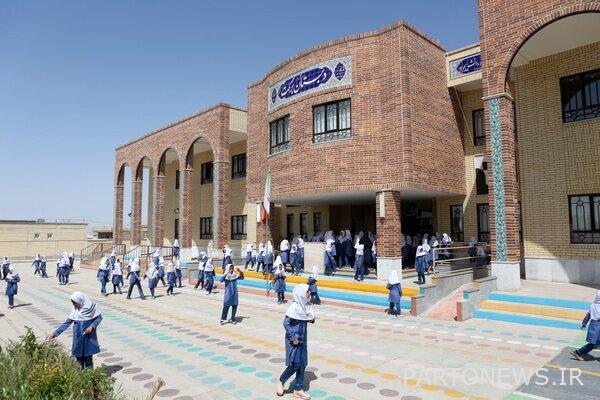53% of Khuzestan schools are resistant / Construction of 1800 classrooms in the province – Mehr News Agency | Iran and world’s news

According to Mehr reporter, Mohammad Saeedipour said at a press conference on the occasion of Fajr decade on Tuesday afternoon: As you know, Iran’s Islamic revolution was a cultural revolution, and the school and education system play a central and key role in the continuation of this culture. has it.
He added: This year, the second day of Fajr decade coincided with the opening of 1,100 classrooms across the country, and the opening program was held by video conference. Khuzestan’s share of this number was 75 projects in the form of 310 classrooms with a credit of 200 to 250 billion tomans.
Saeedipour pointed out that Khuzestan had the record number of opening classes in the country with this number of classes, and continued: The General Administration of School Renovation of Khuzestan is following several important missions in the 13th government, the first of which is to pay attention to deprived and underprivileged areas; The president, the minister of education and the head of the country’s school modernization organization have emphasized a lot on rural and nomadic areas.
Announcing the news that currently 1,800 classrooms are being built in Khuzestan in the form of 480 projects, he said: 916 new classrooms have been built this year (a total of 450 billion Tomans has been spent on these projects so far) To complete it, we need a credit amounting to 300 billion tomans) will be delivered and efforts are being made to complete and deliver the rest of the projects by allocating provincial and national credits by October next year.
Dismantling 1240 stone classes in Khuzestan
Saidipour pointed out that one cannot rely only on the government sector to complete the projects, and added: the capacity of Khuzestan school building donors is great and they play a very key and essential role in the building of schools; Last year, Khuzestani benefactors set a record for attracting public contributions by donating 300 billion tomans.
Referring to the fact that since the beginning of this year, 675 billion Rials have been attracted by the benefactors of Khuzestan school builders, he said: The relationship with various companies and institutions is legal, and they must, according to the law, share a part of their production and added value in the form of social responsibilities. allocate to the field of health and schools; Companies and industries based in Khuzestan should provide services to people in this format.
Director General of Khuzestan Schools Renovation, pointing out that based on the memorandum of understanding signed with the oil company, 60 projects with a credit of 230 billion Tomans will be implemented, said: One of the large and important programs of the 13th government to provide financial resources is the issue of production and sale of surplus properties. Joint meetings have been held in this regard and good things have happened that part of next year’s financing will be realized through the sale of surplus property.
Referring to the identification of 37 educational properties and introducing them to the country’s schools renovation organization to evaluate their status, Saeedipour added: surely, the financial value from the sale of these properties will be allocated to complete the half-finished schools project in Khuzestan; The results of this work will be evident by next year.
He said about the performance of the Khuzestan School Renovation Department in the implementation of the plan to dismantle stone schools: This plan started in 2009, consisting of 460 projects with 1,240 classrooms, and so far the number of delivered projects has been 192 in the form of 344 classrooms. .
10% of Khuzestan schools are dangerous
The Director General of Khuzestan Schools Renovation announced that 105 projects with a credit amounting to 200 billion Tomans are being implemented in the form of 261 classrooms. With the delivery of these projects, 49% of stone schools will be completely dismantled. The rest of the stone schools include schools of 6 to 12 classes, which require huge financial resources from the government.
Saeedipour, referring to the implementation of Shahid Panahi’s plan (removal of dry stone schools without mortar or concourse schools with a student population of more than 10 people) in Khuzestan for the dismantling of stone schools, he stated: The implementation of this plan started from October this year and will continue until July next year; So far, 16 schools have been identified in the form of 33 classrooms with a credit of 20 billion Tomans.
Announcing the news that there are 5,800 educational units in Khuzestan, 53% of which are resistant, 19% need to be retrofitted, and 28% need to be demolished and built, he said: In the literature of engineering schools, demolition does not mean collapsing. need to be renovated and rebuilt; Less than 10% of schools in the province are dangerous.
Director General of Khuzestan Schools Renovation, referring to the observance of educational justice, said: Suleiman Mosque has an old texture and pre-revolution era; Efforts are being made to bring the education per capita of some cities to the national standard.

